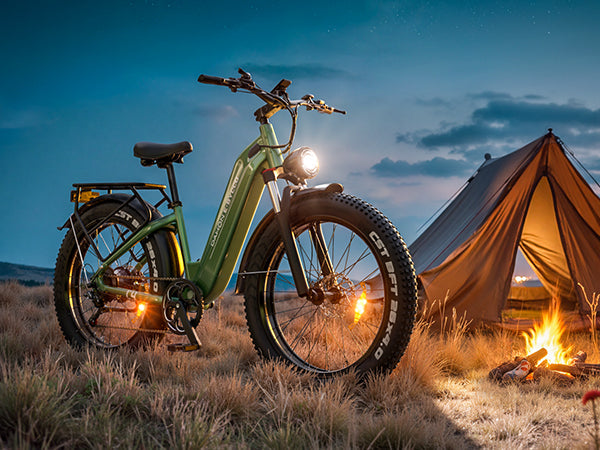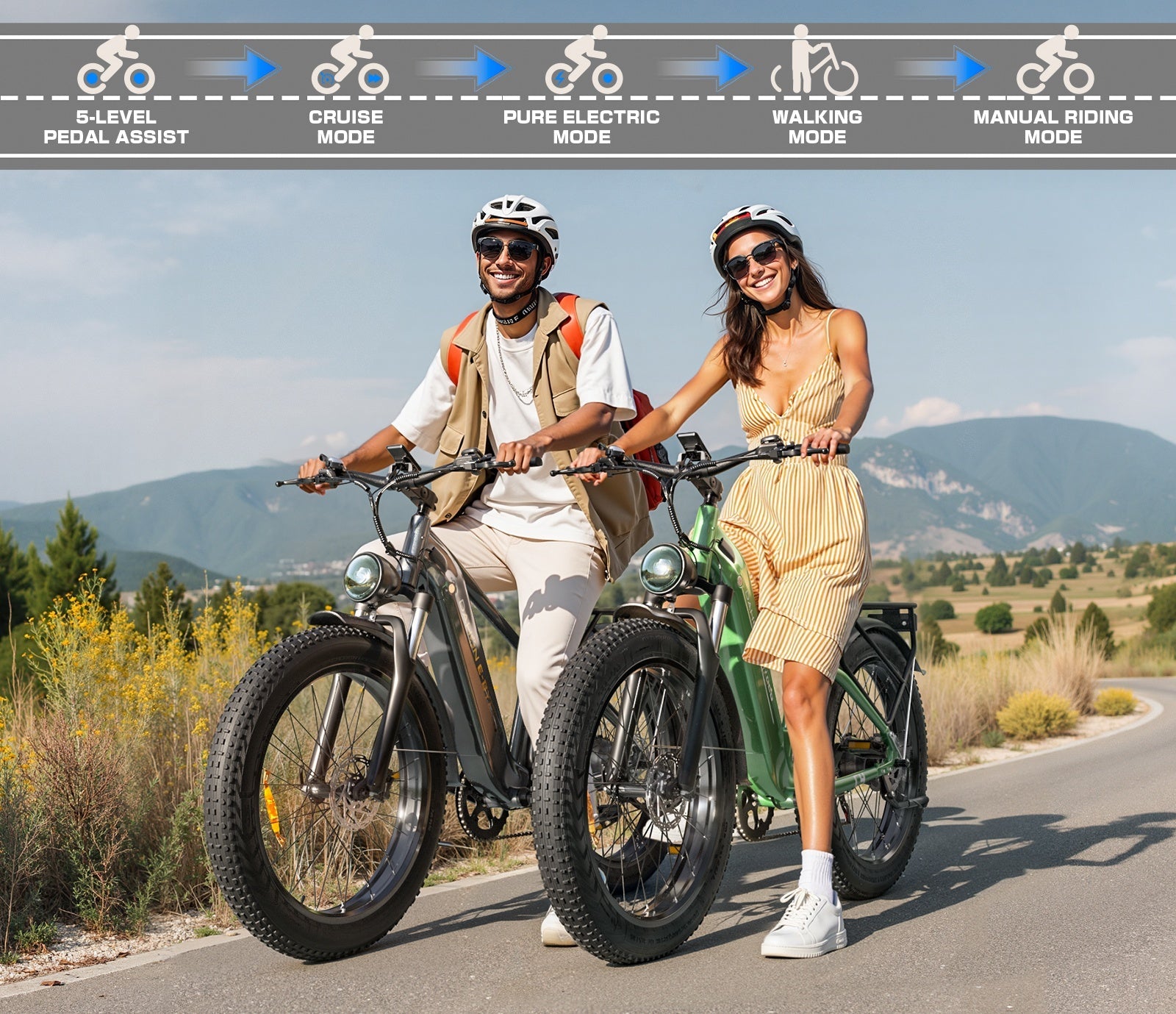Electric bikes have become increasingly popular due to their convenience, eco-friendliness, and ability to make commuting easier. However, not all e-bikes are created equal—some are faster than others. If you're wondering what influences an e-bike's speed, this guide breaks down the key factors.
1. Motor Power (Wattage)
The motor is the heart of an e-bike and directly impacts its speed. Motors typically range from 250W to 1000W or more:
-
250W-350W: Suitable for city commuting, with speeds up to 15-20 mph (25-32 km/h).
-
500W-750W: Faster acceleration, reaching 20-28 mph (32-45 km/h).
-
1000W+: High-performance e-bikes capable of 35+ mph (56+ km/h), often used for off-roading.
Higher wattage means more power, but it also drains the battery faster and may be subject to legal speed limits in some regions.
2. Battery Voltage & Capacity
The battery supplies power to the motor, and its voltage (V) and capacity (Ah) affect performance:
-
36V: Common in entry-level e-bikes, sufficient for moderate speeds.
-
48V: Provides better acceleration and higher top speeds.
-
52V-72V: Found in high-performance e-bikes for maximum speed and torque.
A higher-capacity battery (measured in Ah) ensures longer range but doesn’t always increase speed—voltage plays a bigger role in performance. Also, if the battery is low on power, it will also affect the speed of the bike.
3. Weight (Rider + Bike)
Heavier loads require more power to move, which can reduce speed:
-
Bike Weight: Lightweight e-bikes (40-50 lbs) accelerate faster than heavy models (70+ lbs).
-
Rider Weight: A heavier rider may experience slightly lower top speeds, especially on hills.
- Bicycle load: A lot of items can be placed on the rear rack of an electric bicycle. If you put a lot of heavy objects, it will increase the burden on the bicycle and the speed of the bicycle will naturally decrease.
4. Terrain & Riding Conditions
-
Flat Roads: E-bikes reach maximum speed more easily.
-
Hills & Inclines: Steeper slopes reduce speed unless the motor has high torque.

-
Off-Road (Gravel, Dirt): Rough terrain can slow down an e-bike due to increased resistance.
5. Tire Type & Pressure
-
Tire Width: Wider tires (e.g., 4" fat tires) provide stability but may reduce speed compared to slim road tires.
-
Tread Pattern: Smooth tires roll faster on pavement; knobby tires are better for off-road but create drag.
-
Pressure: Underinflated tires increase rolling resistance, lowering speed.
6. Aerodynamics & Riding Position
Wind resistance plays a big role at higher speeds:
-
Upright Position: More wind resistance, slightly slower.
-
Forward-Leaning (Sport Bikes): More aerodynamic, allowing higher speeds.
7. Maintenance & Mechanical Efficiency
A well-maintained e-bike performs better:
-
Chain Lubrication: Reduces friction for smoother pedaling.
-
Brake Adjustment: Dragging brakes slow down the bike.
-
Bearing Condition: Worn-out wheel or motor bearings create drag.
8. Pedal Assist vs. Throttle Mode
-
Pedal Assist (PAS): Combines human effort with motor power, often allowing higher speeds.
-
Throttle-Only: Relies solely on the motor, which may limit top speed depending on battery and motor efficiency.
Conclusion
Several factors influence an e-bike’s speed, including motor power, battery capacity, weight, terrain, and legal restrictions. If speed is a priority, opt for a high-wattage motor (1000W+), a high-voltage battery (48V or more), and ensure your e-bike is well-maintained. Always ride safely and follow local e-bike laws to avoid fines or restrictions.
Would you like recommendations on the fastest e-bikes available? Let us know in the comments!

